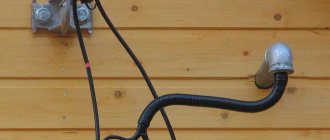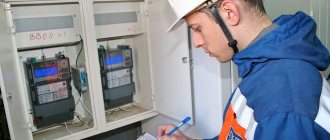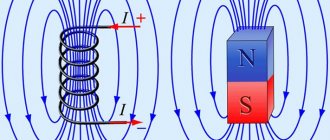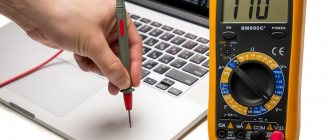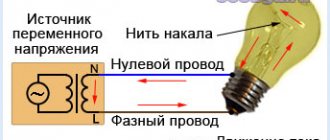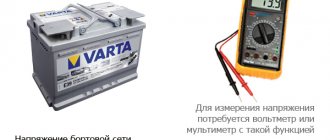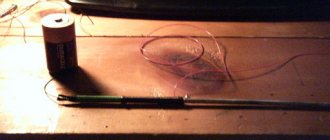When working with electric tools, it is important to know safety precautions. For familiarization and study, symbols have been developed to indicate the possibility of receiving an electric shock. They are applied to various electrical appliances. They show the working personnel or the home craftsman what degree of protection the tool is in question. The article will talk in detail about electrical safety classes of power tools.
Household power tools come in a wide variety
What do classes mean and how are they assigned?
Protection classes are designed for safe work with electric tools. A designer involved in the manufacture of a specific electrical device, even at the initial stages of development, solves certain problems in order to reduce risks when using the tool. We are talking about the use of certain protection, electrical circuits, emergency power outages, and so on.
Depending on the design features, different devices have their own operating conditions. Therefore, they are divided into groups with class assignments, as specified in GOST 12.2.007.0-75.
Information is used both for tools and for electrical installation rules (PUE).
Group 000
This electrical safety protection class has a number of distinctive features:
- Connecting the power line through an RCD.
- The magnitude of the differential current here cannot be higher than 30 mA.
- The response speed for this class is no more than 80 ms.
If the necessary personal protective equipment is available, then electrical equipment of class 00 can be used in spaces and premises that belong to the group of increased electrical hazard.
What does the insulation indicator indicate?
When working with any electric tool, heating of the electric motor, which is installed inside the housing, is inevitable. Because of this, the manufacturing material becomes vulnerable, and therefore the manufacturer must use high-quality insulation to ensure safe operation of the device.
Important! Insulation class is a parameter of electrical equipment that characterizes the quality of the winding and an indicator of the engine’s resistance to heat.
The information contained in it is the temperature limit of the specific equipment. If the set value is violated, the electric motor will be damaged.
Application of the standard
Knowledge of electrical safety standards is the basis for long-term and trouble-free operation of equipment operating on both direct and alternating current.
Products of zero class can be used in dry rooms, provided there is no contact with water or fumes. In this case, the possibility of accidental damage to the housing or power cable is eliminated in advance.
Manual and stationary equipment of class I can only be used for production purposes; it cannot be sold for free sale. You need to work with such equipment using a special belt, wearing gloves, on an insulating mat, with the door closed.
Portable tools and lamps are manufactured in a protective version corresponding to classes II-III. At the same time, for work in a humid environment, products are produced that operate on direct current up to 50 V or on alternating current 220 V, but in a sealed design.
Modern household appliances and tools comply with II KZ. All types of products are equipped with a three-core cable and a socket with a grounding terminal. In its absence, safety is guaranteed by reinforced insulation, relays and fuses.
Marking of power tools
What markings should a power tool have:
- The first class is three horizontal lines and one vertical, which is located above. The symbols are circled. There is insulation and grounding, as well as a cord for connecting to the mains.
- The second class of power tools is two squares (small inside a large one). There is no grounding, but there is reinforced insulation of components that a person can touch during operation.
- The third class is a rhombus with three vertical lines. There is no grounding, the equipment operates on 42 V (the most electrically safe power tool belongs to this class).
Markings on instruments are important.
Markings are simple and easy to remember.
Group II
Now let’s determine how electrical devices of this class differ. This is the presence of a double insulating coating in relation to conductive elements. But the metal components (in particular, the casing) will not be connected to the common ground loop.
As a result, there will be no special contact for protective grounding on the device plug. Electrical equipment and electrical appliances of this class can be used in rooms where air humidity can reach even 85%.
Sometimes they are divided into two subclasses - equipment with metal shells and fully insulated.
There are quite a few examples of such equipment: hair dryers, trolleybuses, electric drills, vacuum cleaners, street lamps.
Classes of electrical tools according to GOST
The list includes power tools that have a cable for connecting to the network. This is a hose type equipped with protection against damage to the insulation.
There are 3 classes or varieties:
- First class with grounding conductor. Tool for work in production. You will have to use gloves, a mat or special shoes. This type of equipment is prohibited in frequent use.
- Equipment for the most dangerous premises. The employee must wear dielectric gloves.
- The third class is work in the most dangerous areas without the use of protective equipment.
Important! Any employee can work with devices if they have permission.
Group I
A prerequisite for this class of electrical safety approval is the presence of both protective grounding and working insulation. As for grounding, it is usually implemented by installing a special plug where there is a mechanical contact that provides connection to the PE bus.
As for the metal shells of the device (for example, the housings of electrical tools, other metal structural elements), they are also connected to a common ground loop.
The main protection here is ordinary insulation. The conductive parts of the device are in contact with the protective conductors of the electrical wiring, which protects them from dangerous voltage. After all, the protection will work.
An example of equipment of this class is almost all existing household appliances and electronics - personal computers, food processors, dishwashers, etc.
Protection classes
Categories are created depending on the parameters of a specific device and area of use.
electrical safety
Special conditions must be arranged for work.
How are power tools classified according to the method of protection against electric shock - room standards:
- Low degree of danger is an area where the air temperature does not rise above 30 degrees. There are no particles of chemical elements.
- Premises where one of the conditions is not met.
- Objects where there is high humidity and air temperature rises above 35 degrees.
Important! The most harmless classification of a power tool based on its electrical safety is 0. It is these devices that are best used by ordinary people in everyday life.
Power classification
The characteristic indicates how long the tool can function without interruption:
- Industrial. This is a portable tool that operates for 15 hours. Electrical safety data is very low.
- Heavy Duty. Similarly, but water and dust will not get inside.
- Profesional - the highest safety requirements.
Household power tools
For household use, it is necessary to purchase tools from the “Hobby” variety (from the Latin Hobby). They operate for approximately 30 minutes without recharging and have a high level of safety.
How to classify by application
There are three categories:
- Tool for creating holes.
- Polishing.
- Cutting materials.
A separate type is for auxiliary tools.
According to working method
There are only two types in this category:
- Cordless products, also called hand tools.
- Stationary tools that operate from the network.
Important! Stationary machines cannot be used at home, since the operator requires qualifications.
Penetration of various objects into the body
The classification of power tools also takes into account the touches of the master during operation:
- 0—no protection required.
- 1 - protection from solid objects with a diameter of over 50 mm and it is not possible to get inside with your hands.
- 2 - diameter 12.5 mm and protection against penetration by fingers.
- 3 - diameter 2.5 mm and protection against penetration of various tools.
- 4 - diameter 1.0 mm and protection against ingress of wires.
- 5K - complete insulation from sand and wires.
- 6K - insulation from dust and wires.
The points are important to learn because they show exactly where a particular device can be used.
Classification by safety level
There are 3 types of security:
- “0” is the rated voltage, insulation is required.
- “01” - high-quality insulation and grounding available.
- “02” - additional insulation (double) in places where contact is possible.
- “03” - tools with scarlet power (45 V).
Important! If you need to find out which classes of power tools are not grounded, then this is option “03”.
How is resistance to heat classified?
Designations are in Latin letters:
- Y - very low indicator (winding made of silk or cellulose).
- A - limit 105 °C (same winding, but with processing).
- E - 120 °C (resin winding).
- C - 180 °C (the winding is made of durable materials, including ceramics, mica, glass).
Groups apply to all instruments.
Insulation resistance to overheating
Overheating of the tool leads to damage to internal parts
. This is a very important and serious parameter, since it characterizes the temperature that the electric motor can withstand during operation. Cellulose and silk are the least resistant to heat.
Portable devices
The following types are available in this category:
- Zero - without grounding.
- The first is with grounding.
- The second one has a high level of insulation.
The last category includes tools with low voltage.
Group 0I
This class of hand-held power tools is distinguished next in terms of electrical safety. The current-carrying parts of such equipment are insulated, but there is no insulation on the metal components of the structure. Protection here is realized by mechanical or electrical contact with the PE bus. This ensures potential equalization. It also prevents the formation of electrical charges on metal elements when the insulation is damaged.
Here the contact with the ground loop will be displayed with a special graphic symbol. According to existing standards, ground wires have a yellow-green tint.
Examples include both stationary and rail-mounted devices, but not beyond the length of the ground wires. That is, cranes, electric locomotives, transformer substations, etc. Such installations will always be operated only with grounding.
Decoding
Marking. What you should pay attention to:
- Y - low indicator, heating no more than 90 ° C, cotton winding.
- A - the same parameters, but the winding has been processed.
- E - resin winding, maximum heating temperature 120 °C.
- B - the winding is made of mica.
- F - synthetic winding.
It is important to pay attention to these markings because if the heating process is not controlled, the equipment may catch fire and cause injury to the operator.
Categories of premises
You can also distinguish classes of premises according to electrical safety:
- No increased danger. These are spaces with low air humidity (up to 45%). There is a ventilation and heating system. Floors are non-conductive (earthen, reinforced concrete, earthen, etc. are considered conductive). If this is a production workshop, then its floors are covered with dielectric. In such rooms there are no high temperatures, dampness, chemical environments, conductive floors and dust.
- With increased danger. What can be said about this electrical safety class of premises? A space will be included in the category if it meets at least one of these conditions: damp (air humidity more than 75%), conductive dust is constantly present, there is a conductive floor covering (reinforced concrete, brick, metal, earthen), constantly high temperatures (more than 35° WITH). These are also those rooms where people can simultaneously touch the metal shells of the equipment and the grounded metal structure of the building.
- Particularly dangerous. These are rooms with “special dampness” (in some cases it can reach 100%), spaces in which there is an active chemical or organic environment (which can destroy equipment). Premises that fall under any two conditions from the “high-risk” category are also considered particularly dangerous.
Use of devices if its protection class is known
There is a clear set of recommendations and rules that must be followed to safely work with an electrical device. For example, if a tool belongs to “0” or “01” class, then it is not used without grounding. First class can only be used in production with gloves or a rubber mat.
Rubber mat
No additional safety measures will have to be observed when working with class 2 equipment, except when work is performed inside tanks or wells.
The third class is suitable for any conditions.
Group 0
What determines this equipment electrical safety class? Such devices have only operational isolation from AC or DC current. In the event of its (current) leakage, a grounding contact is not provided.
Here, open non-current-carrying conductive elements are not connected either to grounding or to the protective conductor of the electrical wiring. In the event that such insulation is broken, only the environment - air, flooring, etc. - can provide protection to a person. There are no dangerous voltage indicators on the housings of devices of this class.
It is permissible to use such devices only in spaces where there are no conductive grounded elements in the area where people are located, where there are no conditions of increased danger, where access to unauthorized persons is prohibited.
Therefore, such equipment must be installed only in dry spaces and rooms. If we rely on the recommendations of the International Electrical Commission, then the use of electrical equipment of class 0 should be completely abandoned. Why?
If the insulation on non-conductive elements of devices is damaged, voltage may arise that is dangerous to human health and life. Accordingly, this threat increases when operating Class 0 equipment in damp, damp areas.
An example would be any electrical appliance in a metal case that is not connected to ground by the manufacturer - the same electric stove with open heating elements. Another striking example is Soviet heaters equipped with open spirals.
Industrial
This is the name of tools that work for a long time without breaking. Most often they are classified as a conveyor process, so they do not turn off for 15-18 hours. Such units are characterized by long service life and reliability. Apart from this, repairs are often not required. There is one peculiarity. Power tools of this type usually work in enclosed spaces, and therefore must be completely environmentally friendly.
Ergonomics is another requirement for such installations. It is impossible to call Industrial devices multifunctional, because they have limited capabilities. People with special education are allowed to visit them, so the level of security is low. Before starting work, it is worth creating certain conditions for operation:
- the required voltage level in the network and maximum wiring reliability;
- indoor humidity indicator;
- temperature at which the device will not fail;
- dust level.
Only in this way will the tools be able to fully operate and perform their assigned tasks. If the conditions are not met, devices can quickly fail, although this is unusual for them.
Hobby
Many people need household power tools. Hobby can be amateur, garden, garage. But it is not used often (from period to period). From this it is clear that he will not be able to work for a long time without stopping. During assembly, high-power motors are not used, since the output does not require a high efficiency index. But the devices can work throughout the day for up to five hours. However, minor breaks are taken during the process so that the unit does not fail.
There are also significant disadvantages
Thus, much attention is not paid to ergonomics, namely to user protection. But many people use these types of tools, since no additional skill or experience is required.
The entire arsenal of units should not be subjected to harsh operating conditions, because most often one person works with them. But the level of maintainability is low. No maintenance is required (except for personal inspection before starting work).
These are the main types of power tools, into which the entire range of commercially available products is divided. From this list, everyone understands what exactly they need to purchase. There is another group worth knowing about though.
Other classification
Leading brands of professional power tools provide a different classification. The classification systematization is based on the results of numerous tests of power tools. They are carried out by manufacturers of power tools, taking into account the frequency of occurrence of the same breakdowns and maintaining serviceability under different operating conditions. Checking out Prof. suitability of EI, excluding electric shock to the worker.
The international system of classification of EIs according to their purpose consists of the following markings:
- Industrial;
- Heavy duty;
- Professional;
- Hobby
Industrial
Industrial professional power tools are designed for conveyor work. The units can be turned on for 15-18 hours. The serviceability of power tools of this class is rarely checked. As a rule, industrial-grade units are designed for use in enclosed spaces. They must meet increased environmental cleanliness requirements.
Operators who have undergone special training are allowed to work with the professional “Industrial” tool. Therefore, EI has a low level of safety.
Heavy duty
“Heavy duty” power tools (literal translation from the English term “Heavy duty”) do not differ significantly in their characteristics from the previous brand. The difference lies in the improved security options:
- enhanced moisture protection;
- high dust resistance;
- significant impact resistance.
Heavy duty power tools
Professional
This brand designates the highest quality professional power tools. It is used by electricians to lay electrical circuits in the fencing of buildings and structures; it is simply irreplaceable in the construction of various objects. A powerful professional unit can operate for 8-9 hours without long stops.
Professional grinding machineHobby
The self-name of the EI class - Hobby - indicates that the tools have an amateur purpose. These are home units that are designed for small jobs that do not require long-term continuous operation. They require frequent stops to prevent the engine from overheating. They have little power and are much cheaper than professional EI.
It should be added to everything that there is an international practice of painting professional instruments blue. The housings of amateur units come in green, yellow, red and other colors.
CLIMATE DESIGN OF ELECTRICAL EQUIPMENT
Trivial - climatic design determines the operating conditions of electrical equipment for the corresponding climatic regions (zones). Indicated by an alphanumeric code.
The letter part indicates the climate zone, and the digital part indicates the location (conditions) of placement (see table).
| Letter part | Climate (version) | Digital part | Accommodation |
| U | Moderate | 1 | on open air |
| HL | Cold | 2 | in conditions excluding direct sunlight |
| UHL | Moderate and cold | 3 | closed room without air conditioning (heating, ventilation) |
| T | Tropical | 4 | closed room with air conditioning (heating, ventilation) |
| M | Marine temperate | 5 | rooms with high humidity, without air conditioning |
| ABOUT | General climatic, except sea | ||
| OM | General climatic marine | ||
| IN | All-climate |
Professional
This is the most popular type of professional tool. They are actively used in work. With their help, the most durable components and parts are created. The entire structure is highly reliable during operation. In addition, these devices have the following properties:
- assembly accuracy;
- high level of work and long period of operation;
- ease of maintenance;
- adaptability to severe stress and adverse conditions.
The devices can operate without stopping for up to 9 hours. This is enough for one shift for workers. In terms of environmental indicators, this tool is inferior to the first two, but only slightly. But the ergonomics are lower, since the operating period is no more than 9 hours. Although there is a big plus - this is an increase in the level of safety during the period of work. This means that not only masters can work with them. If it fails, it will be easier to find a replacement part than for the first two types of power tools.
Interesting Facts
- In the USSR, the share of protection class II
.
0I
appliances were sometimes used , having a bolt or socket for grounding connection. - Soviet refrigerators had a protection class [ source not specified 1910 days
], but were often used in the kitchen, a high-risk area.
As a result of increasing global harmonization of electrical safety standards, IEC standards are phasing out the very idea of Class 0 devices; Class 0 devices, which are now recognized as unsafe in many industrialized countries.
- For safe operation, all electrical equipment of the trolleybus, including low-voltage, must be made in accordance with protection class II
. Trolleybuses produced in Europe have conductive wheel tires, which also significantly increases safety. - Some TVs (despite the fact that it is positioned as a class II
) have unprotected live parts: antenna sockets and tulip connectors.
In televisions made in the Soviet Union, the design of the antenna socket ensured that it was impossible to touch live parts [ source not specified 830 days
].




